Key takeaways:
- Selective mutism is often rooted in profound anxiety rather than simple shyness, requiring understanding and supportive environments for effective intervention.
- Adequate awareness campaigns can reduce stigma, empower families, and foster more inclusive practices in schools and social settings.
- Personalized strategies and involvement of families significantly enhance intervention outcomes for children with selective mutism.
- Creative therapies and establishing safe, predictable routines can effectively help individuals express themselves and build confidence over time.
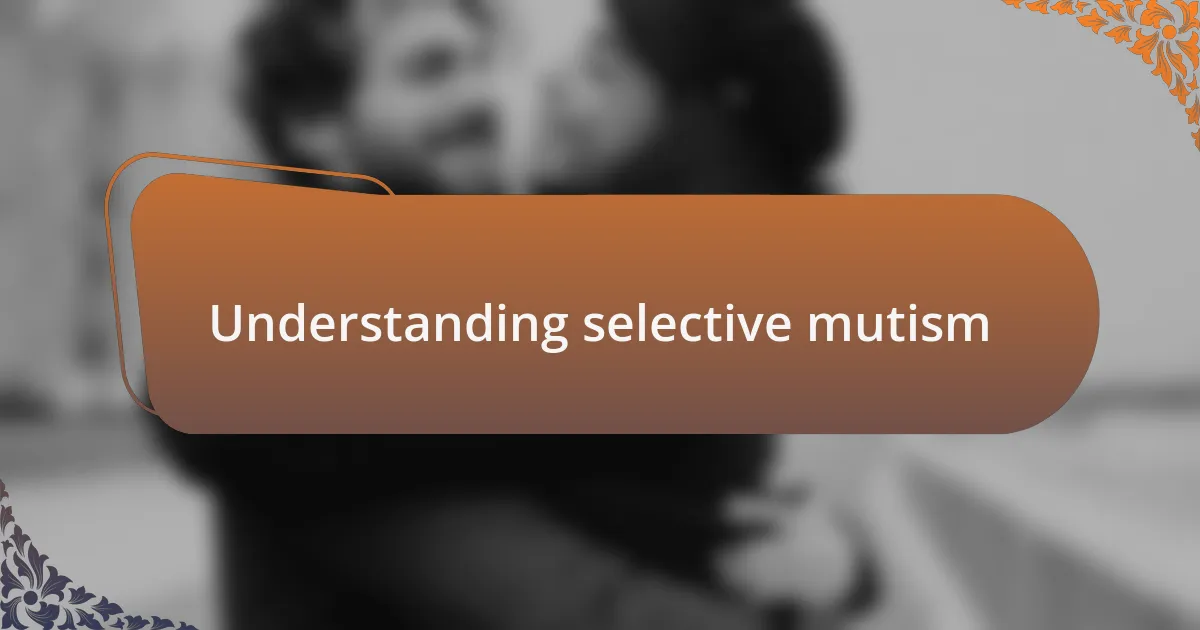
Understanding selective mutism
Selective mutism is often misunderstood, as it goes beyond typical shyness. I recall meeting a child who became visibly anxious in social settings; their silence wasn’t a choice but a profound fear of speaking. How often do we overlook the internal struggles of those who appear quiet?
This condition typically manifests in early childhood, primarily in situations where the child feels uncomfortable or pressured to communicate. I’ve seen how frustrating it can be for parents when their child, who speaks freely at home, suddenly freezes in public. Have you ever wondered what it must feel like to hold back words when so much is at stake internally?
Research demonstrates that selective mutism is linked to social anxiety and may stem from genetic or environmental factors. Listening to parents share their experiences, I often think about the layers of emotions involved—fear, confusion, and hope for their child’s eventual comfort in speaking. What if, by understanding these underlying causes, we could create more supportive environments for these children?
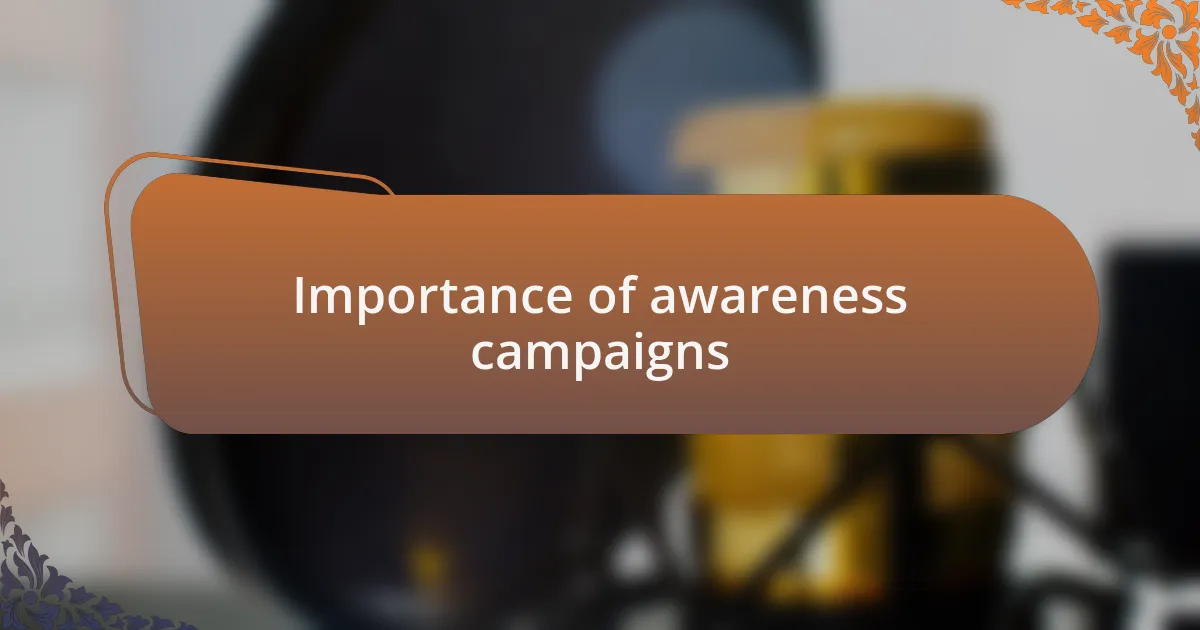
Importance of awareness campaigns
Awareness campaigns play a crucial role in demystifying selective mutism and educating the public. I remember attending a community event where a speaker shared personal stories about their child’s journey with this condition. Hearing those narratives made the challenges more tangible and reminded me of the power of stories in fostering empathy. How might our understanding shift if we truly heard these experiences?
These campaigns can also empower families by providing resources and a sense of community. When I first learned about selective mutism, I felt lost until I found a support group filled with parents who shared their struggles and strategies. It made such a difference to connect with others facing similar challenges. Have you ever sought out a group just to feel understood in your struggles?
Moreover, raising awareness helps reduce stigma, paving the way for more inclusive practices in schools and social settings. I’ve observed how a more informed approach can change a child’s experience significantly. What if each school embraced this knowledge to foster a nurturing environment where every child feels safe to express themselves? That could truly transform lives.
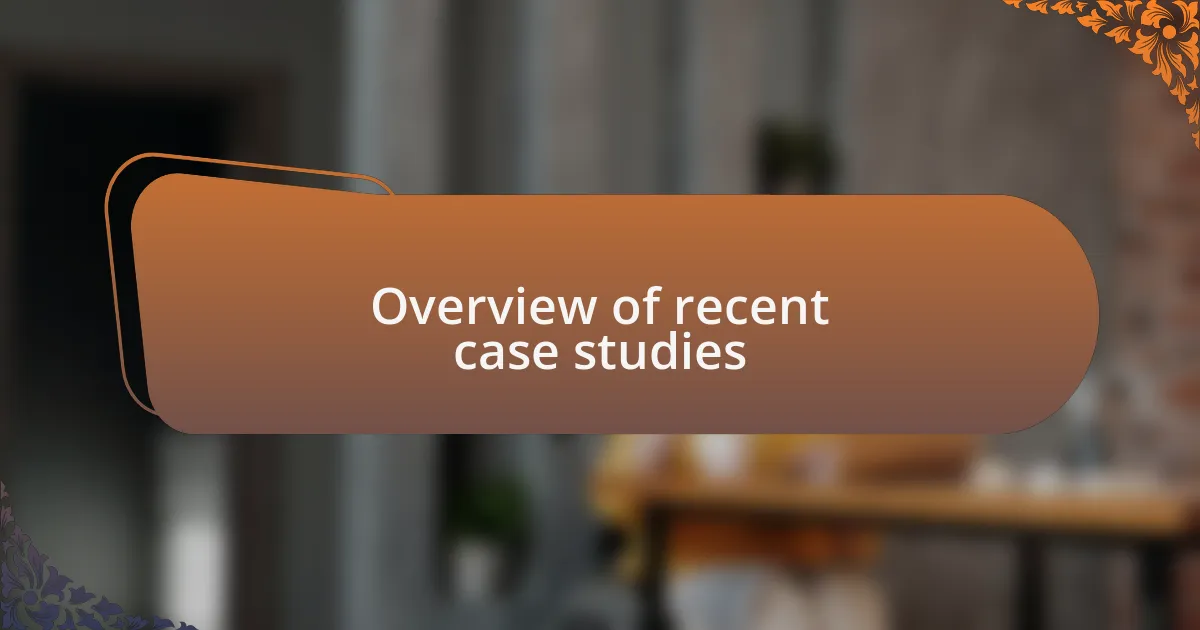
Overview of recent case studies
Recent case studies have provided valuable insights into the diverse experiences of individuals with selective mutism. For instance, one study highlighted a young girl who initially struggled to communicate in her classroom. Yet, with gradual intervention and an understanding teacher who implemented supportive strategies, she blossomed socially and academically. This transformation left me reflecting on how a tailored approach can unlock a child’s potential.
Another notable case examined the use of play therapy to ease anxiety in a boy facing selective mutism. It was fascinating to see how engaging him through play allowed him to express emotions he couldn’t verbalize. This change led to a significant improvement in his ability to speak in various settings. Can therapy truly make such a profound difference in a child’s willingness to communicate?
Additionally, findings from a recent comparative analysis suggest that early intervention significantly impacts outcomes for children with selective mutism. Parents often express a sense of urgency for support, and these studies corroborate their experiences. It makes me wonder—how can we rally together to ensure every child receives timely help?
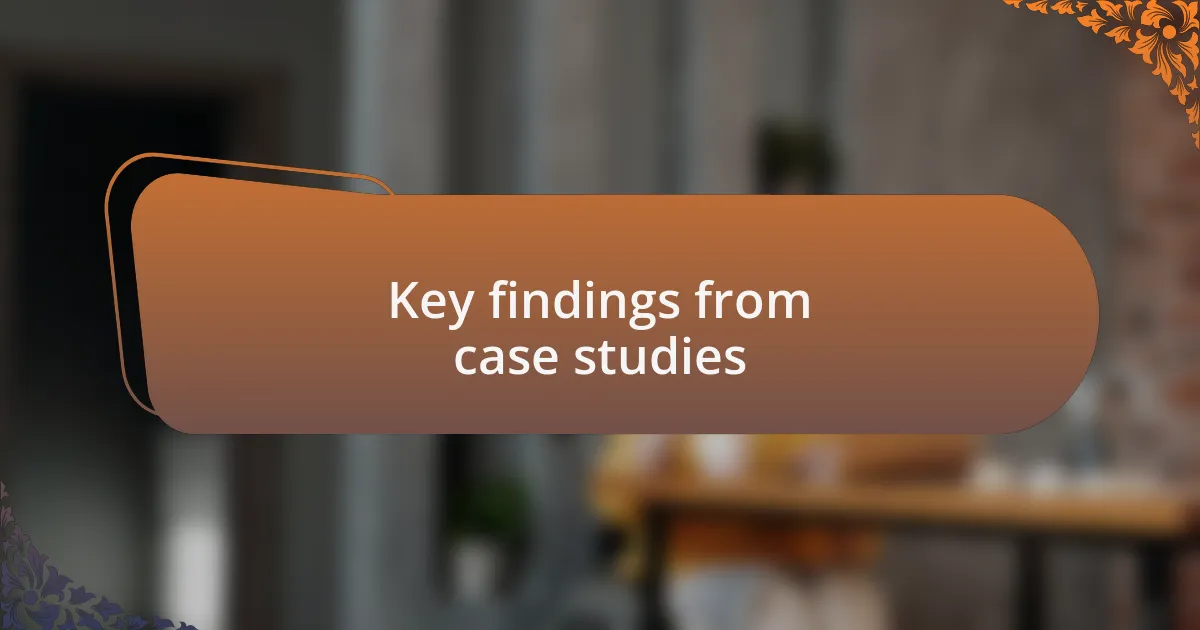
Key findings from case studies
The findings from recent case studies reveal a compelling connection between supportive environments and progress in children with selective mutism. One case involved a boy who initially struggled to speak even in the presence of close friends. It was inspiring to see how the simple act of creating a safe space, free from judgment, allowed him to gradually use his voice. I often ponder how critical it is for us to foster such environments, both at home and in schools.
Another striking observation from these studies is the impact of family involvement in intervention strategies. In one instance, a family actively engaged in therapy sessions learned communication techniques that not only supported their child but also strengthened their own relationships. This makes me reflect on the ripple effect; when families participate actively, their children can find comfort in knowing they’re not alone in the journey. Isn’t it intriguing how collective engagement can enhance individual outcomes?
Moreover, the role of peer relationships cannot be overstated. A particular case showcased how fostering friendships with supportive peers led to remarkable improvements in verbal communication. As I read about this, I couldn’t help but think about the power of connection. How often do we underestimate the influence friends have in encouraging someone to break through their silence? It seems clear that cultivating these friendships is just as vital as any intervention.
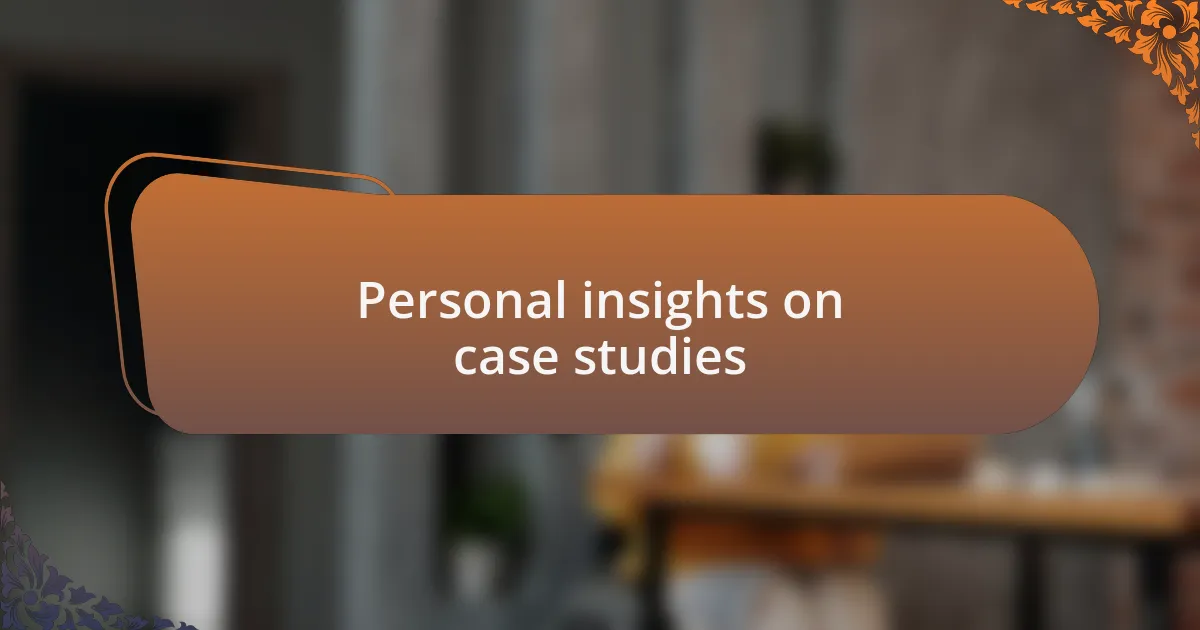
Personal insights on case studies
Personal insights on case studies
Reflecting on the recent case studies, I was struck by the transformative effect of patience in intervention. I remember a session where a little girl, initially mute, took her first step by whispering a single word. The joy in the room was palpable. How often do we overlook the importance of celebrating these small victories? It’s a gentle reminder that progress isn’t always loud; sometimes, it speaks in hushed tones.
Another case stood out to me where a child found it difficult to engage with others, yet through art therapy, she bloomed. Witnessing her transform from silent to expressive through colors and shapes reminded me of the power of alternative communication forms. Isn’t it fascinating how creativity can serve as a bridge to connection? I often wonder how many children would thrive if given the chance to express themselves through non-verbal means.
One poignant takeaway for me was the role of tailored strategies. In one study, adapting the approach to suit each child’s unique personality made a tangible difference. I reflect on how essential it is to recognize each child as an individual rather than fitting them into a standard mold. Have we been too focused on one-size-fits-all solutions? This realization has inspired me to advocate for more personalized methods in therapy and education, promoting a deeper understanding of each child’s unique journey.
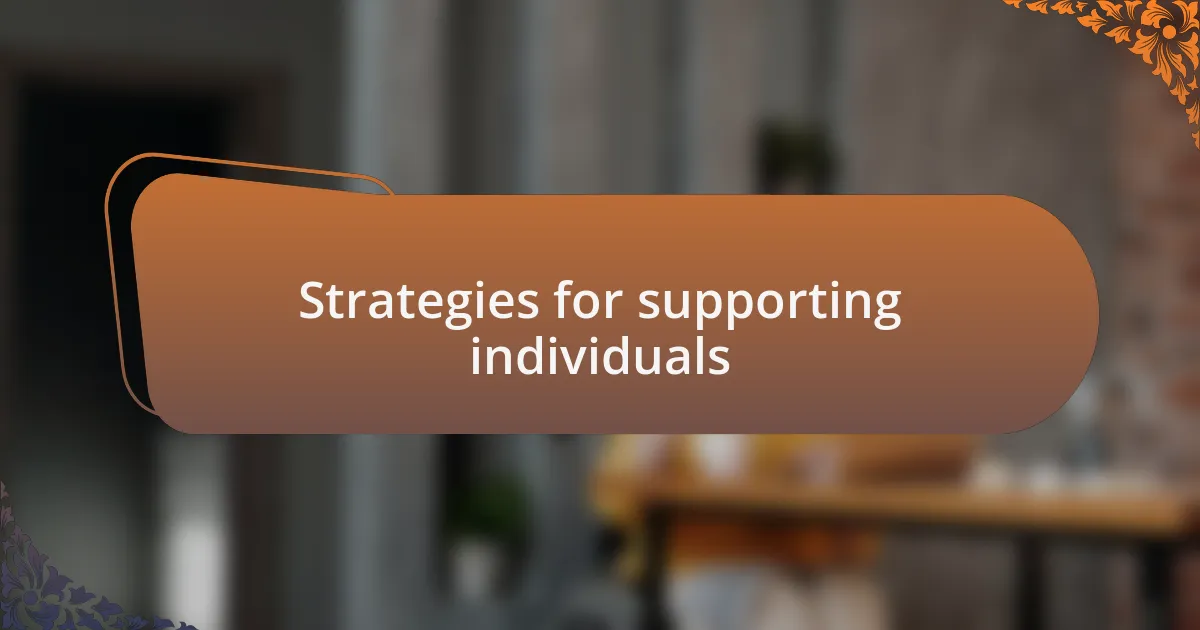
Strategies for supporting individuals
When supporting individuals with selective mutism, creating a safe and comfortable environment is crucial. I recall a workshop where we transformed a rigid classroom into a cozy reading nook with pillows and soft lighting. The children seemed to relax, which resulted in unexpected conversations and laughter. Isn’t it fascinating how physical space can influence emotional safety?
Another effective strategy is building trust through consistent routines. In one instance, I worked with a boy who struggled to communicate during group activities. By establishing a routine that included predictable times for sharing thoughts, he began to open up. Have you noticed how stability can encourage confidence in young people? It’s a reminder that sometimes structure provides the safety net they need to find their voice.
Additionally, involving families in the process is fundamental. In my experience, I’ve seen parents who felt lost become powerful advocates for their child’s needs. During a support group, one mother shared her journey alongside her daughter, highlighting how their bond grew stronger as they learned to communicate together. It raises the question: how can we better equip families to support their loved ones? Engaging families not only facilitates understanding but also creates a supportive network that encourages growth.